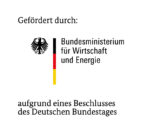Ground-mounted PV systems at the nexus of climate protection, nature conservation and agriculture: conflicts and opportunities for harmonization (KliNaLa-PV)
On land suitable for photovoltaic expansion, this use competes with others such as agriculture or nature conservation. In light of increasing pressure on land, it is crucial to legally regulate these different uses and, as far as possible, to reconcile them with one another. KliNaLa-PV examines the regulations within the current legal framework that address the tension between open-space photovoltaic expansion, nature conservation, and agricultural activity. Based on this, approaches are being developed to resolve such conflicts with the aim of serving all interests in the best possible way.
Duration: July 1, 2025 to December 31, 2026
Project funding: Bundesministerium für Wirtschaft und Energie (BMWE)

Project management

Dr. Nils Wegner (Projektleitung)
Tel: +49-931-79 40 77-20
E-Mail

Michaela Scharpf
Tel: +49-931-79 40 77-276
E-Mail
In principle, Germany has sufficient land resources to achieve the expansion targets for ground-mounted PV systems under the German Renewable Energy Act (EEG 2023). Yet, much of the land that is technically suitable is already dedicated to other uses or reserved for nature conservation. Recent political discussions have shown that further expansion of ground-mounted PV systems must be carefully balanced with agricultural needs and nature conservation. Striking such a balance is seen as essential not only for practical implementation but also for political and public acceptance. A frequently proposed solution is the concept of multiple land use, whereby solar energy is generated on the same land simultaneously used for agriculture or ecological enhancement. Critics, however, argue that this approach risks overburdening photovoltaics and that the required pace of expansion would be better ensured by keeping land uses separate.
Against this backdrop, KliNaLa-PV will analyze the current legal framework regulating the interplay between the expansion of ground-mounted PV systems, nature conservation, and agriculture. Building on this analysis, it will illustrate in various contexts how these tensions can be addressed in new ways – either by reconciling competing interests as far as possible or by deliberately prioritizing one interest over another. The aim is to explore pathways for harmonizing interests that often appear contradictory, in particular through the multiple use of land, in order to achieve expansion targets in conjunction with other social goals and to unlock win-win potential for the diverse uses and functions involved.